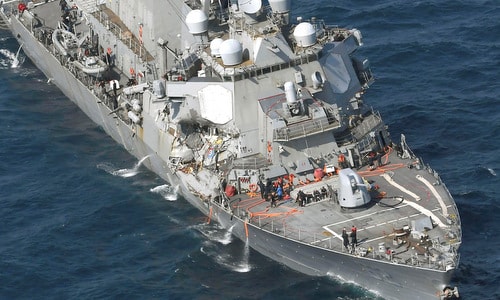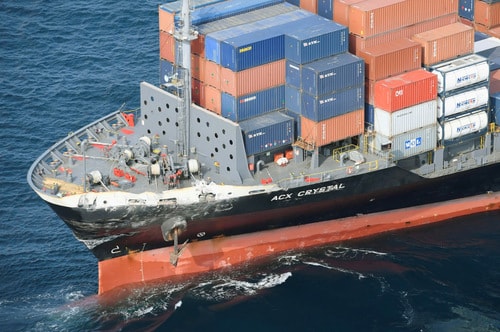US destroyer collides with cargo ship possibly due to night shift error
Carelessness during night watch may have been the reason why sailors on the USS Fitzgerald failed to detect and avoid the Philippine cargo ship.
US destroyer badly damaged after collision
DestroyerUSS Fitzgerald (DDG-62) collided with a cargo ship early this morning.ACX Crystal flies the Philippine flagwhen awayYokosuka, Japan, about 56 nautical miles southwest. The Japanese coast guard confirmed that seven sailors on the Fitzgerald were missing after the collision, Reuters reported.
Images from Japanese television showed the US destroyer had a large dent on its starboard side, part ofThe deck and part of the radar were significantly damaged, and three compartments inside the hull were flooded. Meanwhile, the cargo shipThe ACX Crystal suffered only minor damage to its left bow. Military experts believe the USS Fitzgerald was at fault in this case.
According to the US Coast Guard (USCG), Article 15 of the International Convention for Preventing Collisions at Sea 1972 (COLREGS 72) clearly stipulates the case where two ships avoid each other when communication cannot be established. Accordingly, when two ships are crossing each other's course to the extent that there is a risk of collision, the ship that sees the other on its starboard side must give way to that ship, and if circumstances permit, must avoid passing in front of the other ship's bow.
The damage to the starboard side of the USS Fitzgerald and the port side of the ACX Crystal indicate that the Philippine ship was approaching from the starboard side of the American destroyer. In this case, the American warship would have had the responsibility to give way and take evasive maneuvers if necessary.
 |
USS Fitzgerald suffered heavy damage to its right flank. Photo: Reuters. |
Maritime law also stipulates that the larger displacement vessel has the right of way in the event of a collision. The ACX Crystal has a full load displacement of 29,000 tons, more than three times the full load displacement of the USS Fitzgerald. These rules suggest that the American destroyer was at fault in the collision.
There are two theories to explain the collision. The leading cause is the fault of the USS Fitzgerald night watch, who failed to detect the ACX Crystal during its approach or made the wrong move to give way to the Philippine cargo ship. In this case, the watch crew, including the first mate, helmsman and radar watch, will face disciplinary action by the US Navy.
Another theory is that the USS Fitzgerald was conducting a secret combat exercise and therefore did not turn on its radar and sensors. The US Navy often conducts this exercise, requiring the crew to turn off their radar and communication systems, then search for the remaining ships in the formation. This could explain why the US destroyer was rammed when the Philippine ship entered a blind spot, out of sight of the naked eye.
 |
ACX Crystal suffered only minor damage to the left bow. Photo: Reuters. |
However, military analysts say this is unlikely, as the USS Fitzgerald is operating near a busy shipping lane in the Pacific. Turning off all sensors to conduct exercises here is very dangerous, and could lead to the risk of collision with many merchant ships.
According to VNE
| RELATED NEWS |
|---|


